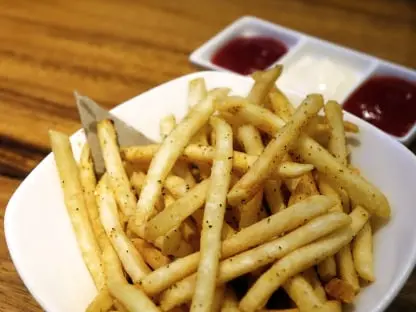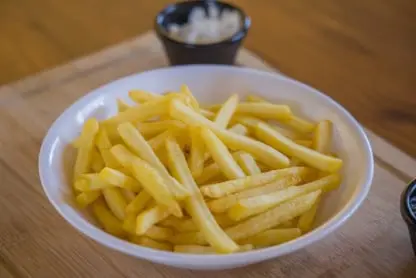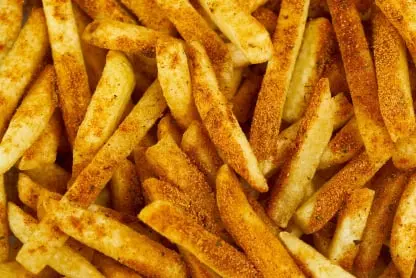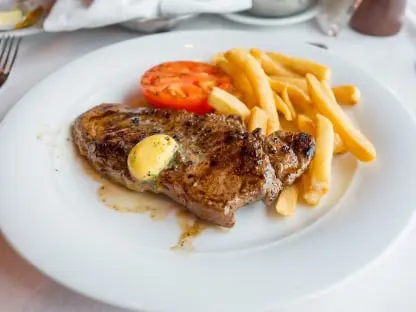Potato fries chips quality inspection app:
Potato fries chips quality inspection app for fries inspection process during potato peeling, cutting, and potato blanch fry and IQF (Instant quick freeze) fries quality control.

Potato Fries Supplier quality inspection & management
The global consumption of potatoes as food is shifting from fresh potatoes to added-value, processed food products. Potatoes are processed into a great variety of products, including cooked potatoes, par-fried potato strips, french fries, potato chips, potato starch, potato granules, potato flakes, and dehydrated diced potatoes, among others. Potato chips are very thin pieces of sliced raw potatoes that are fried to a final oil and moisture content of ∼35% and 1.8%, respectively. In the potato chip industry, each batch of potato tubers must be tested for quality before processing, and the visual aspect is, of course, of great importance. The color of potato chips is the first quality parameter evaluated by consumers and is critical in the acceptance of the product, even before it enters the mouth. On the other hand, acrylamide has been reported as a critical compound for human health (carcinogenic in rats) that is formed in potatoes during frying and that is highly related to the color of the potato chips. Traditionally the potato chip color has been measured instrumentally with special devices called colorimeters. In some European factories, some computer vision systems have been testing the online evaluation of potato chips, allowing chips to be sorted according to defects like black spots or blisters. Some researchers have been also working on a promising device that should be able both to classify chips according to color and to predict acrylamide levels using neural networks. Finally, some authors have used near infrared spectroscopy (NIR) to investigate the possibilities of using online NIR monitoring of acrylamide, moisture, and oil content in potato chips. The objective of this chapter is to show the application of computer vision techniques to automatically study some quality attributes of potato chips.

Potato Fries Chips Quality inspections during production
View App Specifications.
This chapter summarizes the application of computer vision to study the quality attributes of potato chips. In European factories, some computer vision systems are used for the on-line evaluation of potato chips, allowing chips to be sorted according to defects such as black spots or blisters. Some researchers have been also working on a promising device that is able both to classify chips according to color and to predict acrylamide levels using neural networks, and some are currently evaluating devices based on this system with the expectation that it will be fully operational very soon. Apart from the neural network, there is another device based on statistical pattern recognition for color classification of potato chips. Researchers in this topic are routinely providing classical visual evaluation against a standard chart and have conducted a good amount of work to testify which criteria (overall appearance, heterogeneity, contrasted extremities, etc.) should be taken into account by the operator to evaluate the surface of potato chips. The computer vision system allows easy measurement of color not only over the entire potato chip surface but also at small, specific regions of interest. Five models that can measure the color in potato chips using the color of each pixel on the target surface, which cannot be accessed with conventional colorimeters, have been built. For both control and blanched potato chips, acrylamide formation decreases dramatically as the frying temperature decreases from 180° to 120°C. There is a linear correlation between non-enzymatic potato chip browning quantified by computer vision and the corresponding acrylamide values.

Potato Fries Quality control & management
The correlation between sugar levels in raw material (potatoes), brown colouring and formation of acrylamide in French fries was investigated. The objective was to identify incoming potatoes (raw material) with a high potential for acrylamide formation. Ten different potato varieties commonly used in the Western European French fries industry were stored at 8 degrees C and samples were taken throughout the storage time. The current quality control used in the French fries industry for incoming potatoes is poorly correlated with acrylamide in the final product (r = 0.74). Changing the quality control parameter from colour to reducing sugars in raw material did not improve the correlation (r = 0.72). The best correlation was obtained with the Agtron colour measurement after blanching and a two-stage frying (r = -0.88). It was concluded that alternative entrance control measurements could provide better mitigation of the acrylamide issue in French fries from the start of production. These alternatives, however, are less cost-effective and more difficult to implement.

Daily Potato Fries factory hygiene checklist
Whether you prefer your French fries straight or curly, crinkle cut or even shredded and shaped into nuggets; whether you like to grab a steaming fry from a fast-food drive-through bag or nab one from the baking tray or fryer basket in your own kitchen, you’ve more than likely eaten a potato processed at McCain Foods USA.
The world’s largest producer of frozen french fries, McCain produces one-third of all the fries consumed in the world, producing potato products at 1,000,000 pounds per hour.
In and of itself, the potato is not a particularly exciting vegetable – with its dull brown coat and starchy-white innards and its lackluster taste – it is almost never eaten raw and rarely without some enhancement. Yet the potato is one of the world’s most popular and arguably its most important vegetable. And in Easton, Maine, you would certainly find those who would argue its popularity, its importance … and its excitement. A sentiment we saw first-hand in a tour of the Easton McCain Foods plant.